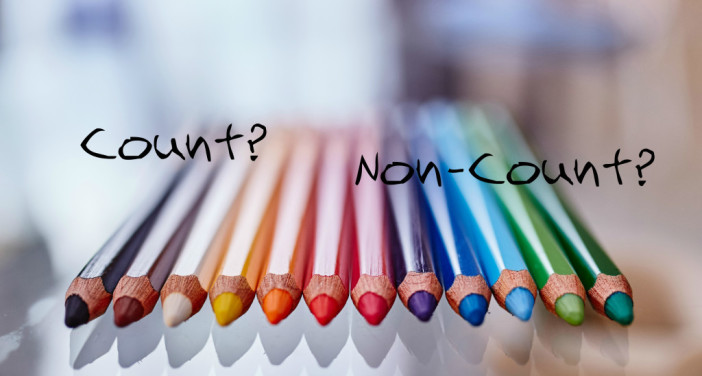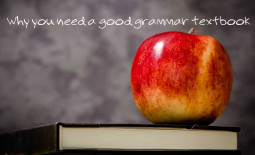Those Tricky Non-Count Nouns
In English, our nouns usually don’t have gender. That’s nice. You don’t have to worry about whether a chair is feminine or masculine.
However, we do have count and non-count nouns. Not surprisingly, count nouns can be counted. For example, there are five students in the room. I have twelve pencils. The United States has 50 states. Students, pencils, and states are count nouns.
To make count nouns plural, you usually add an –s to the end of the word. However, some common count nouns are irregular (like child/children and man/men).
Non-count nouns can’t be counted. They may be a liquid (you can’t count water) or a mass (you can’t count rice). Or they may be an abstract idea (you can’t count luck).
You can’t make these non-count nouns plural and you may not use an article like a and an in front of them.
There are lots of English words that we can use to make non-count nouns countable. For example:
A cup of water
A grain of rice
A bit of luck
One very common mistake English learners make is to treat non-count nouns like count nouns. Typically, the words I hear used incorrectly are:
- Advice (never advices)
- Work (very rarely works)
- Homework (never homeworks)
- Information (never informations)
- Equipment (never equipments)
- Knowledge (never knowledges)
- Help (never helps)
- Scenery (never sceneries)
These words are used frequently and you won’t sound fluent if you use them incorrectly. Try memorizing these common phrases.
Can you give me some advice? I need some advice. Here’s my advice.
I have some work to do. This work is hard. I have lots of homework.
I need some information. She gave me some information. Here’s the information you need.
We don’t have the right equipment to do this. We need better equipment.
Scientists search for more knowledge. He has a thirst for knowledge. Knowledge is power.
I need some help with this. This is a big help. He gave me a little help.
We saw some beautiful scenery. The scenery is gorgeous in China. We traveled by train and enjoyed the scenery.
Just to add a bit of confusion, there are some non-count nouns that seem plural (like [eye]glasses, jeans, and socks). When you need to specify a number of these, you generally use a pair of … For example, I have two pairs of glasses (my reading pair and my spare pair), three pairs of jeans, and 20 pairs of socks.
And, finally, to make you really confused, some nouns are both count and non-count! Usually, they have somewhat different meanings. For example:
He is raising chickens. His family eats chicken every Sunday.
There is a hair in my soup. I have blonde hair.
There are seven colors in the rainbow. This room needs more color.




